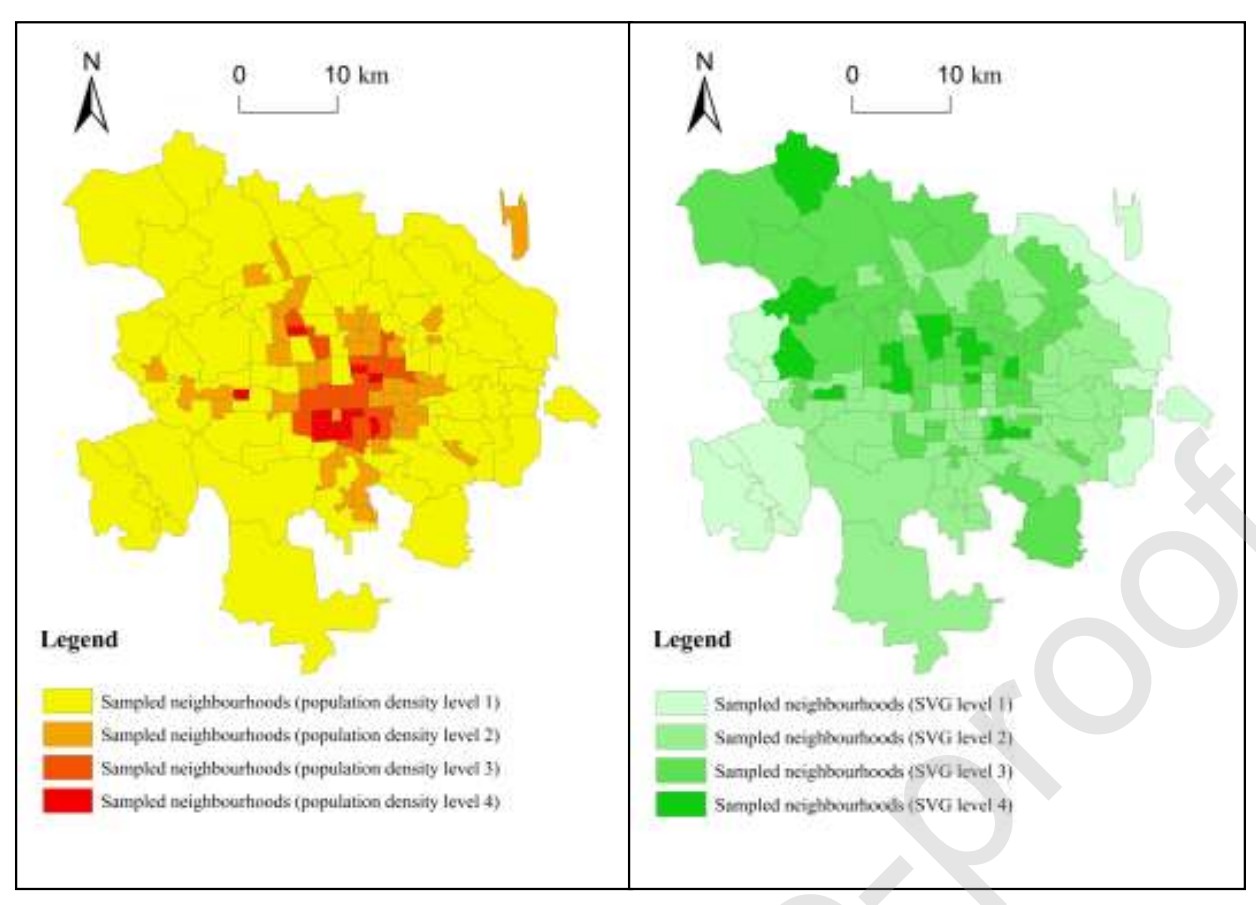Abstract
Sensing urban greenness from street view data offers a new and alternative way of measuring the association between greenness exposure and subjective wellbeing in developing countries where traditional census data are poor. This paper focuses on the association between life satisfaction and street-level visible greenness exposure at residential and work locations, using a combination of sensor data and individual cross-sectional survey data (4619 employed respondents) in Beijing, China. We use a single self-reported question (‘“how well are you satisfied with your life as a whole”’) to measure life satisfaction. Street View Greenness (SVG) is taken as a surrogate for street-level visible greenness exposure at residential and work locations. The results suggest that street-level visible greenness exposure in residential locations is positively associated with perceived satisfaction, though such effects are less significant after considering greenness exposure at work locations. The stratified analysis provides the insight that the associations between street-level visible greenness exposure and life satisfaction vary with individual demographic and socioeconomic characteristics such as sex, age educational attainment and income. Males, young adults, people with low income and educational attainment may benefit more from SVG exposure than other groups. Findings of this study suggest that urban greenness in residential and work environments should simultaneously be taken into the design of land use and public policies aiming to improve people’s subjective wellbeing.

Q.E.D.









